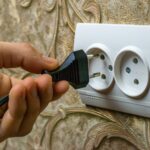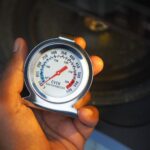Understanding the importance of proper ventilation
Adequate ventilation is crucial for maintaining a healthy indoor environment. It helps remove pollutants, excess moisture, and stale air from buildings. Proper airflow can significantly reduce the risk of respiratory issues and allergies. In residential settings, ventilation systems typically exchange air 0.35 times per hour. Commercial buildings often require higher rates, sometimes up to 20 air changes per hour. Recuperation plays a vital role in modern ventilation systems. These devices recover heat from exhaust air, improving energy efficiency.
Recuperation https://onninen.pl/en/products/Air-conditioning-and-ventilation/Recuperation systems can recover up to 90% of heat from outgoing air. This process significantly reduces heating costs during colder months. In summer, these systems can help pre-cool incoming air. Most recuperators use cross-flow or counter-flow heat exchangers. These components transfer heat without mixing the air streams. High-efficiency filters in recuperation units can remove up to 99.97% of airborne particles as small as 0.3 microns.
Ventilation systems with recuperation offer numerous benefits for building occupants. They maintain consistent indoor temperatures, reducing thermal discomfort. These systems also help control humidity levels, ideally keeping them between 30% and 50%. Proper ventilation can decrease indoor CO2 levels, which often exceed 1000 ppm in poorly ventilated spaces. Lower CO2 concentrations contribute to improved cognitive function and productivity. Some advanced recuperation systems incorporate sensors to adjust airflow based on occupancy and indoor air quality.
The installation of a recuperation system requires careful planning. Factors such as building size, occupancy, and local climate must be considered. A typical residential recuperation unit can handle airflow rates between 200 and 400 cubic meters per hour. Larger commercial systems may process over 10,000 cubic meters per hour. The initial cost of a recuperation system can range from $1,000 to $5,000 for residential applications. However, energy savings often result in a payback period of 3 to 5 years.
Regular maintenance is essential for optimal performance of recuperation systems. Filters should be cleaned or replaced every 3 to 6 months. Heat exchangers may require cleaning once a year to prevent dust accumulation. Proper maintenance can extend the lifespan of a recuperation system to 15-20 years. Some modern units feature self-cleaning mechanisms and remote monitoring capabilities. These features help ensure consistent performance and reduce maintenance needs.
Exploring different types of recuperation centers
Recuperation centers https://onninen.pl/en/products/Air-conditioning-and-ventilation/Recuperation/Recuperation-centers come in various types to suit different applications. Plate heat exchangers are common in residential and small commercial settings. These units can achieve efficiency rates of up to 80%. Rotary heat exchangers, often used in larger buildings, can reach efficiencies of 85% or higher. Some advanced models incorporate enthalpy wheels, which transfer both heat and moisture between air streams.
Counter-flow heat exchangers offer the highest efficiency among recuperation centers. These units can recover up to 95% of heat from exhaust air. They work by passing supply and exhaust air through adjacent channels in opposite directions. This design maximizes the surface area for heat transfer. Counter-flow exchangers are particularly effective in cold climates where heat recovery is crucial.
Recuperation centers with heat pumps provide additional heating and cooling capabilities. These systems can achieve coefficients of performance (COP) ranging from 3 to 5. In heating mode, they extract heat from exhaust air and transfer it to supply air. During summer, the process reverses to provide cooling. Heat pump recuperators can operate efficiently even when temperature differences between indoor and outdoor air are small.
Some recuperation centers incorporate energy recovery ventilators (ERVs). These units transfer both sensible and latent heat between air streams. ERVs are particularly useful in humid climates, as they can help manage indoor moisture levels. They typically recover 70-80% of the energy in exhaust air. Advanced ERV systems may use membrane-based heat exchangers, which offer improved moisture transfer and reduced cross-contamination.
The size and capacity of recuperation centers vary widely. Small residential units may handle airflow rates of 100-300 cubic feet per minute (CFM). Large commercial systems can process over 10,000 CFM. The choice of recuperation center depends on factors such as building size, occupancy, and climate. Proper sizing is crucial to ensure optimal performance and energy efficiency. Oversized units may lead to short-cycling and reduced effectiveness, while undersized systems may struggle to maintain adequate ventilation.
Implementing wall recuperation for space-efficient ventilation
Wall recuperation https://onninen.pl/en/products/Air-conditioning-and-ventilation/Recuperation/Wall-recuperation systems offer a compact solution for buildings with limited space. These units are typically installed directly through exterior walls. Most wall recuperators have a diameter of 100-160 mm and extend 300-500 mm into the room. They can provide ventilation for areas up to 25-30 square meters, depending on the model. Wall recuperators are particularly suitable for retrofitting existing buildings where installing ductwork is challenging.
The efficiency of wall recuperation units varies but generally ranges from 70% to 85%. Some advanced models incorporate ceramic heat exchangers, which can achieve up to 90% efficiency. These systems operate on a reversing airflow principle. They extract warm air from the room for 70-120 seconds, storing heat in the ceramic core. Then, they reverse direction, bringing in fresh air and transferring the stored heat to it.
Many wall recuperators feature DC motors with variable speed control. This allows for airflow adjustment based on room occupancy and environmental conditions. Typical airflow rates range from 15 to 50 cubic meters per hour. Some units incorporate humidity and CO2 sensors for automated operation. These smart features help maintain optimal indoor air quality while minimizing energy consumption.
Installation of wall recuperation systems is relatively straightforward. It usually requires a core drill to create a hole in the exterior wall. The unit is then inserted and sealed to prevent air leakage. Most systems come with weather-resistant external grilles to protect against rain and wind. Some models offer additional features like pollen filters or activated carbon filters for improved air purification.
Wall recuperators typically consume between 3 and 7 watts of electricity during operation. This low power consumption contributes to their energy efficiency. Many units are designed for continuous operation, providing constant ventilation. However, some models offer intermittent modes for further energy savings. The lifespan of wall recuperators is generally 10-15 years with proper maintenance. Regular cleaning of filters and heat exchangers, usually every 3-6 months, is essential for optimal performance.
Designing an effective air distribution system
An efficient air distribution system https://onninen.pl/en/products/Air-conditioning-and-ventilation/Recuperation/Air-distribution-system is crucial for ensuring proper ventilation throughout a building. The design should consider factors such as room sizes, occupancy patterns, and specific ventilation requirements. Typical residential systems use 4-6 inch diameter ducts, while commercial applications may require ducts up to 24 inches in diameter. The total pressure drop in a well-designed system should not exceed 0.1 inches of water column per 100 feet of ductwork.
Proper sizing of ducts is essential for balanced airflow. Undersized ducts can lead to high air velocities, causing noise and reducing system efficiency. Oversized ducts may result in inadequate air movement and temperature control issues. The velocity in main ducts should typically be kept below 1000 feet per minute. Branch ducts and supply outlets should maintain velocities under 700 feet per minute to minimize noise.
The placement of supply and return vents plays a crucial role in air distribution. Supply vents are often located near exterior walls or windows to counteract heat loss or gain. Return vents are typically positioned on interior walls to promote air circulation. In multi-story buildings, return vents on upper floors help manage temperature stratification. The general rule is to have one return vent for every 400 square feet of living space.
Zoning can significantly improve the effectiveness of air distribution systems. This approach divides the building into separate areas with individual temperature control. A typical residential zoning system might have 2-4 zones, while large commercial buildings could have dozens. Zoning can be achieved through dampers in the ductwork or by using multiple smaller air handling units. This strategy can reduce energy consumption by up to 30% compared to non-zoned systems.
Regular maintenance of air distribution systems is crucial for optimal performance. Duct cleaning should be performed every 3-5 years, or more frequently in dusty environments. Sealing and insulating ducts can improve system efficiency by up to 20%. Leaky ducts can waste up to 30% of the energy used for heating and cooling. Using mastic sealant or metal-backed tape can effectively seal duct joints and connections. Proper insulation, with R-values of 6-8 for unconditioned spaces, helps minimize heat loss or gain through ductwork.





